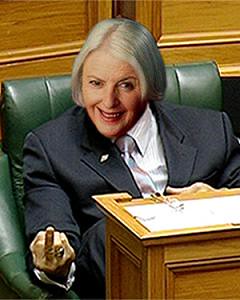Since the beginning of climate change policy in this country, there has been a recognition that the bulk of the effort in meeting our targets would be met with forestry. Planting tees provided the cheapest and easiest way of absorbing carbon from the atmosphere and thus reducing net emissions. But despite this, policy has consistently failed to encourage tree planting.
In the 90's, the then-National government simply assumed that removing "distortions" in the market around tax policy and losses would make the necessary trees magically appear - despite the absence of any incentive for people to plant them and no plans by the government to do so. But then, they believed that the market would also magically provide us with cheaper electricity, better health care, cheaper accident insurance, and better railways as well - and we know how well that worked out. In any case, reality failed to accord with government projections which assumed net planting rates of 100,000 hectares per year all the way out to 2020. NeoLiberals being the sorts who stubbornly insist that reality must change to match the theory, this fact was of course studiously ignored.
When Labour came to power, it realised it would have to do something to provide an incentive to plant forests, so it eventually proposed a Permanant Forest Sink Initiative: lock up your trees in perpetuity and promise to harvest them only in a sustainable manner, and you would get carbon credits for them. They balanced this carrot with the stick of the deforestation cap - if too many trees were cut down, then the additional liability would be imposed on those responsible. In a time of declining timber prices and rising land prices due to the dairy boom, this created a perverse incentive, and a mad rush to cut down trees and profit before the cap was imposed. Score one for stupidity. In the meantime, the PFSI was quietly forgotten, and the enabling legislation (the Climate Change Response Amendment Bill, which would allow the transfer of credits to private individuals and businesses) left to languish at the bottom of the Order Paper.
Now, it looks like the PFSI is back. There have been some minor changes, including a backdating of credits to 1990 for indigenous forest, and a lifting of the original restriction on harvesting (forests originally could not be harvested even sustainably for 35 years), but the program is essentially the same. The question now is whether forest owners will go for it...







